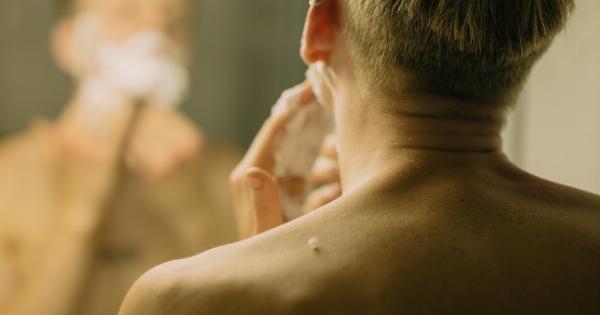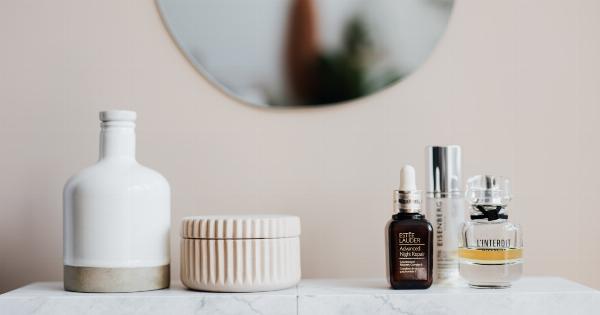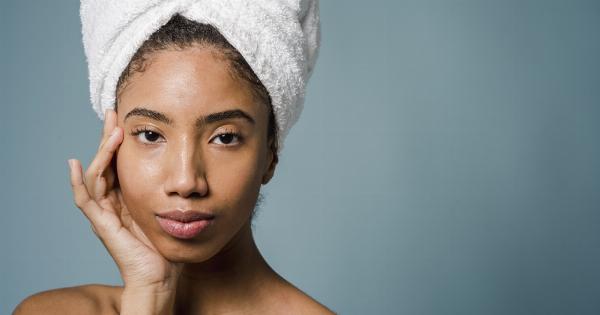Shaving is a daily ritual for many individuals, but it can be a source of frustration and irritation if not done correctly.
The process of removing hair from the skin’s surface can cause irritation, redness, and even razor burn if the proper techniques and precautions are not taken. In this article, we will discuss 30 common shaving mistakes that you should avoid if you want to achieve and maintain healthy skin.
1. Using a Dull Blade
One of the most common mistakes people make while shaving is using a dull blade. A dull blade can pull at the hair instead of cutting it cleanly, leading to a rough shave and increased chances of skin irritation.
Make sure to replace your blades regularly to ensure a smooth and comfortable shave.
2. Not Preparing the Skin
Properly preparing your skin before shaving is essential for a smooth and irritation-free shave. Start by wetting your skin with warm water to soften the hair and open up the pores.
This will help the blade glide more easily across the surface of your skin, reducing the risk of razor bumps and ingrown hairs.
3. Skipping Exfoliation
Exfoliating the skin before shaving helps remove dead skin cells and unclogs the hair follicles, making it easier for the razor to cut the hair. By exfoliating regularly, you can reduce the likelihood of ingrown hairs and achieve a closer shave.
4. Shaving Against the Grain
Shaving against the grain may offer a closer shave, but it also increases the risk of irritation and razor burn. Instead, shave in the direction of hair growth to minimize the possibility of razor burn and ingrown hairs.
5. Applying Too Much Pressure
Applying excessive pressure while shaving can cause skin irritation and cuts. Allow the weight of the razor to do the work and avoid pressing down too hard. This will help minimize friction and reduce the chances of nicks and cuts.
6. Overusing the Razor
Using a razor for too long can lead to a dull blade, which, as mentioned earlier, can cause irritation and rough shaves. Replace your razor regularly, ideally after five to seven uses, to maintain a sharp blade and achieve a smooth shave.
7. Not Rinsing the Blade Often Enough
While shaving, hair, shaving cream, and dead skin cells can accumulate on the blade, which can make the razor less effective. Rinse the blade frequently to remove any debris and ensure a cleaner and easier shave.
8. Shaving Too Quickly
Rushing through the shaving process can increase the risk of nicks, cuts, and uneven results. Take your time and shave in small, gentle strokes. This will allow for a more precise shave and reduce the chances of skin irritation.
9. Using Harsh Shaving Creams or Gels
Some shaving creams and gels contain harsh chemicals that can cause dryness and irritation. Opt for products that are specifically designed for sensitive skin and free of irritants such as alcohol and fragrances.
These gentler formulations will help protect and nourish your skin while you shave.
10. Not Moisturizing After Shaving
After shaving, it is important to moisturize your skin to replenish its hydration and prevent dryness. Choose a moisturizer that is suitable for your skin type and apply it generously to soothe and protect your skin.
11. Shaving Too Often
Frequent shaving can cause irritation and lead to dry, rough skin. Avoid shaving every day, if possible, and give your skin time to recover between shaves. This will allow your skin to heal and reduce the risk of irritation and ingrown hairs.
12. Neglecting to Cleanse Before Shaving
Before shaving, it is important to cleanse your skin and remove any dirt, oil, or residue that may be present. This will help prevent bacterial growth and ensure a cleaner, healthier shave.
13. Using Hot Water
While warm water is ideal for softening the hair and opening up the pores, using hot water can strip the skin of its natural oils and cause dryness. Stick to warm water for a more balanced and gentle shave.
14. Not Treating Razor Burn
Razor burn can be painful and irritating, but many individuals neglect to properly treat it. If you experience razor burn, apply a soothing, alcohol-free lotion or aloe vera gel to alleviate discomfort and reduce redness.
15. Neglecting Aftercare for Ingrown Hairs
Ingrown hairs can be unsightly and uncomfortable. To prevent them, exfoliate regularly and apply a warm compress to the affected area to help the hair grow out. If necessary, use tweezers to gently lift the hair from beneath the skin’s surface.
16. Using Dirty Razors
A dirty blade can introduce bacteria to your skin and lead to infections. Make sure to clean your razors thoroughly after each use and replace them regularly to maintain good hygiene.
17. Ignoring Your Skin Type
Each person has a unique skin type that requires specific care. Consider your skin type when choosing razors, shaving creams, and aftercare products.
For example, individuals with dry skin may benefit from moisturizing products, while those with oily skin may prefer lighter, non-comedogenic formulas.
18. Shaving Over Acne or Skin Conditions
If you have acne, eczema, or other skin conditions, shaving can exacerbate the problem. Avoid shaving over affected areas and consult a dermatologist for alternative hair removal methods that are suitable for your skin condition.
19. Sharing Razors
Sharing razors can lead to the transmission of bacteria and infections. Each person should have their own razor and refrain from borrowing or lending razors to others.
20. Neglecting to Patch Test New Products
When introducing new shaving products into your routine, it is important to patch test them on a small area of your skin to check for any adverse reactions. This will help you avoid potential allergic reactions and skin irritations.
21. Not Shaving in the Right Direction
Understanding the direction of hair growth is crucial for achieving a comfortable and close shave. Shaving in the opposite direction can lead to razor bumps and ingrown hairs.
Take note of the grain of your hair and adjust your shaving technique accordingly.
22. Using Multiple Blades
Multi-blade razors may give a closer shave, but they can also increase the chances of irritation and ingrown hairs. Consider using a single-blade razor or an electric shaver to minimize these issues.
23. Neglecting Your Tools
Regularly clean and maintain your shaving tools to ensure their effectiveness. This includes cleaning your razor, replacing the blades, and storing them in a dry, clean environment. Taking care of your tools will result in a better shaving experience.
24. Not Protecting Your Lips
Your lips need protection during shaving, too. Apply a lip balm or petroleum jelly to your lips before shaving to prevent them from getting dry and chapped.
25. Shaving Right After a Shower or Bath
While it may seem convenient to shave right after a shower or bath, this can cause your skin to be overly soft and vulnerable to irritation. Give your skin a few minutes to cool down and dry off before you begin shaving.
26. Using Long Strokes
Long strokes may seem efficient, but they can increase the risk of cuts and irritation. Opt for shorter strokes, especially if you have sensitive skin, to minimize the chances of skin damage.
27. Shaving Dry Skin
Shaving without lubrication can cause friction and irritation. Make sure to use a shaving cream, gel, or foam to create a protective layer between the razor and your skin.
28. Neglecting Your Neck
Many individuals overlook their neck area while shaving, leading to an uneven look. Take your time to ensure you shave properly and evenly across your neck.
29. Not Following Up with Aftershave
Aftershave helps to soothe and protect the skin after shaving. Choose an aftershave product that suits your skin type and apply it after you’ve finished shaving.
30. Being Inconsistent with Your Shaving Routine
Consistency is key for maintaining healthy skin. Stick to a regular shaving routine that includes proper preparation, the correct techniques, and post-shave care to keep your skin in its best condition.































